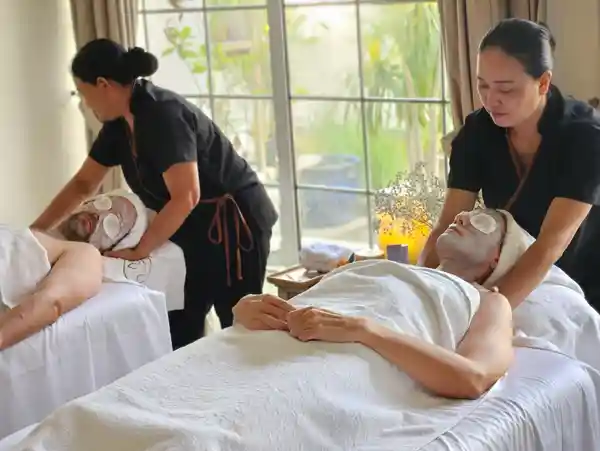Not all massages are created equal. One whispers serenity with jasmine-scented oils; the other charges in like a knot-busting SWAT team. If you’re toggling between the soul-soothing Balinese massage and its traditional cousins like Swedish, Thai, or Deep Tissue, you’ve landed in the right place. We break down what each technique does, feels like, and delivers so you can stop second-guessing and start booking.
Key Takeaways
- Balinese massage blends aromatherapy, acupressure, and assisted stretching for a holistic, sensory-rich experience.
- Traditional massage includes familiar styles (Swedish, Thai, Deep Tissue), typically targeting muscle tension, stiffness, and chronic pain.
- Balinese is your go-to for emotional reset and gentle restoration; Traditional is ideal for tension release and performance recovery.
- Your massage decision should depend on your current need: mental tranquility or physical relief.
The Great Massage Dilemma: Zen Vibes or Deep Pressure?
Let’s get real choosing a massage isn’t just about preferences. It’s about priorities. Are you walking around with stress stored like an encrypted file in your shoulders, or do you need someone to disarm the knots left behind by your gym heroics?
Balinese and Traditional massages approach healing from opposite ends of the spectrum. One invites you to melt; the other to mend.
Balinese Massage: A Spa Ritual From the Gods
Think rainforest, incense, and gentle hands that coax your nervous system into submission. A Balinese massage is essentially what a spiritual cleanse would feel like if it came with eucalyptus oil.
Key Techniques:
- Aromatherapy: Essential oils like jasmine, frangipani, or lemongrass turn your body into a bliss burrito.
- Acupressure & Reflexology: Trigger points are gently activated to stimulate healing and restore internal harmony.
- Passive Stretching: Loosens up tight areas without making you do the work.
Originating from Bali’s ancient healing practices, this method treats your body like a sacred object not a mechanical part to be adjusted.
Best For:
- Stress release
- Emotional recalibration
- Anyone who wants a massage that feels like a nap in paradise
Traditional Massage: No-Nonsense Muscle Therapy
Traditional massage is an umbrella term covering globally recognized methods like Swedish, Thai, and Deep Tissue.
Swedish: Gentle, rhythmic, and great for newbies. Think of it as the decaf of massages.
Thai: More dynamic. Done fully clothed. You may get folded like a lawn chair but in a good way.
Deep Tissue: The masseuse will find that one rogue knot from 2017 and evict it with precision and force.
Best For:
- Chronic pain and injury recovery
- Athletes or desk warriors
- Flexibility and posture correction
The Side-by-Side Breakdown
| Feature | Balinese Massage | Traditional Massage |
| Origin | Bali, Indonesia | Global (Thai, Swedish, etc.) |
| Focus | Mind-body balance | Musculoskeletal tension |
| Method | Aromatherapy, stretching, light pressure | Kneading, pressing, deep manipulation |
| After-Effect | Emotionally recharged | Physically decompressed |
So Which Massage Should You Book?
It depends:
- If your traps feel like piano wire, hit up a Deep Tissue or Thai expert.
- If you’re curious but commitment-phobic, start with Swedish or Balinese both are low-impact and deeply relaxing.
FAQs
Q: Is Balinese massage painful?
A: Nope. It’s more “guided meditation with oils” than “ouch-that-was-my-scapula.” Read more on our FAQs page.
Q: Can I blend techniques in one session?
A: Absolutely. Most therapists welcome a hybrid approach. Just ask.
Q: Do I need to bring anything to my appointment?
A: Just yourself. Oils, towels, and good vibes are provided.
Summary
Your massage style should match your moment. Balinese massage whispers your spirit back into alignment. Traditional massage wrestles your muscles back into functionality. Whether you’re team “zen retreat” or “fix this knot now,” knowing the difference helps you book what your body (and mind) actually needs.
So go ahead, pick your potion and give tension its eviction notice. Don’t forget to read our reviews
Authored by a wellness editor with firsthand experience in both styles and a deep appreciation for stress relief that smells like jasmine.



